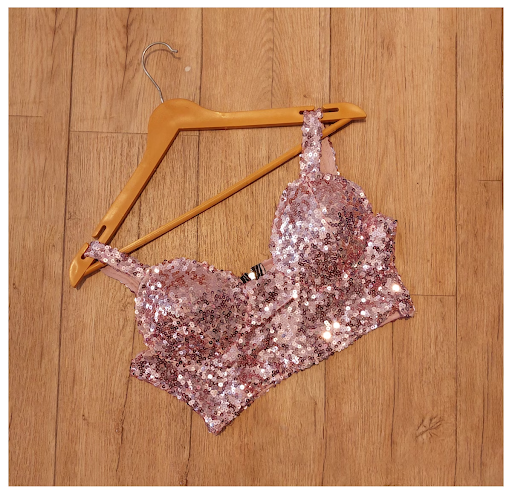Table of Contents
- Monitor and Balance Water Chemistry
- Regular Filter Maintenance
- Drain and Refill Periodically
- Clean Spa Surfaces
- Maintain the Spa Cover
- Inspect Equipment Regularly
- Encourage Personal Hygiene
- Schedule Professional Servicing
- Conclusion
Maintaining a home spa offers countless benefits, from relaxation and stress relief to creating an inviting space for friends and family. Whether you own a hot tub, swim spa, or a relaxation pool, understanding the fundamentals of proper care is key to ensuring every soak is as clean and enjoyable as the last. For those who value both comfort and performance, effective spa maintenance significantly enhances your investment in home leisure, much like Denver above ground pools, which offer durability and relaxation in equal measure.
Preventing water quality issues and extending the lifespan of spa components begins with consistent, thorough maintenance. Regular attention not only keeps your water crystal clear and hygienic but also ensures that mechanical systems run efficiently, saving you costs on repairs and replacements. Whether you’re a spa enthusiast or a newcomer seeking an optimal home spa experience, the following practical maintenance tips will help keep your retreat in pristine condition.
Monitor and Balance Water Chemistry
The foundation of effective spa maintenance lies in vigilant management of water chemistry. Testing your spa’s water with reliable test strips at least twice a week helps you maintain the ideal balance and prevent problems such as cloudy water, scaling, or irritation.
- pH: The optimal range is 7.2–7.8, ensuring both user comfort and equipment longevity.
- Total Alkalinity: Maintain a level between 80–120 ppm to prevent pH fluctuations.
- Calcium Hardness: Aim for 100–250 ppm with acrylic spas or 250–400 ppm for plaster varieties, reducing surface damage and scale formation.
- Sanitizer Levels: Chlorine at 1–3 ppm or bromine at 3–5 ppm for keeping bacteria at bay.
Consistently maintaining these levels prevents costly repairs and ensures a safe, comfortable soak.
Regular Filter Maintenance
Spa filters are crucial for trapping dirt, debris, and contaminants, ensuring your water remains clean and inviting. Remove and rinse your filter with fresh water every two weeks to maintain peak flow and effectiveness. For a deeper clean, soak the filter in a specialized filter cleaner once a month, then allow it to dry completely before reinstallation. Replace the filter every 12–18 months to guarantee optimal water quality and reduce the load on pumps and heaters.
Skipping routine filter care can lead to cloudy water, unsightly foam, and increased wear on spa components — all of which compromise the spa experience and lead to expensive repairs.
Drain and Refill Periodically
Like all water-based features, your spa collects contaminants and dissolved solids over time, even with regular chemistry adjustments. Fully draining and refilling your spa every three to four months resets your water quality and reduces problems associated with hard-to-balance water or high total dissolved solids. Before refilling, wipe down the spa shell and jets with a gentle, spa-safe cleaner to remove buildup and biofilm. This short-term investment of time pays off with more consistent water clarity, lower sanitizer needs, and reduced risk of bacterial contamination.
Clean Spa Surfaces
Routine cleaning of your spa’s interior surfaces is vital for preventing stains, algae, and bacterial growth. Use a non-abrasive, spa-specific cleaner and soft cloth to remove residue from the waterline, seats, and shell. Pay extra attention to areas near jets and around the spa cover seam, where grime tends to accumulate. Proper surface cleaning helps keep odors at bay, enhances aesthetics, and prevents skin or eye irritation.
Maintain the Spa Cover
Your spa cover does more than keep leaves and insects out. It significantly reduces evaporation, conserves heat, and shields your spa water from UV damage and contaminants. Clean your spa cover monthly using mild soap and water; avoid harsh chemicals that can deteriorate the material. Consider applying a conditioner specifically formulated for vinyl spa covers to prevent cracking and fading. Make sure your cover fits snugly to maximize energy efficiency and maintain optimal water conditions.
Inspect Equipment Regularly
Inspecting your pump, heater, jets, and control systems monthly helps you spot leaks, odd noises, or signs of wear before they develop into more significant problems. Listen for unusual sounds during operation and inspect damp areas beneath spa equipment, which may indicate early leaks. Promptly addressing minor issues avoids costly downtime and extends the lifespan of your spa’s vital systems. Regular checks also reinforce a safer environment for users.
Encourage Personal Hygiene
Promoting simple hygiene practices among spa users dramatically reduces the workload on your spa’s filters and sanitizer systems. Encourage everyone to shower briefly before entering the spa to wash off lotions, body oils, and cosmetics. Rinsing swimsuits before soaking can also prevent detergent residue from contributing to foaming or water cloudiness. This shared habit supports a cleaner, healthier spa and enhances the overall experience for everyone.
Schedule Professional Servicing
Even with diligent at-home maintenance, scheduling annual servicing by a qualified spa technician is strongly recommended. Experts can perform comprehensive inspections, service or replace key components, and carry out deep cleaning with specialized tools. Professional servicing addresses hidden problems and ensures all safety features and mechanical parts meet manufacturer standards, ensuring uninterrupted enjoyment and a long life for your investment.
By committing to these essential spa maintenance tips, you’re assured of a fresh, relaxing, and reliable home spa experience all year round. Regular care not only heightens your comfort and peace of mind but also protects and enhances your spa investment for years to come.
Conclusion
A well-maintained spa isn’t just about aesthetics—it’s about creating a reliable, hygienic, and rejuvenating retreat in the comfort of your home. By staying proactive with water chemistry, filter care, equipment checks, and routine cleaning, you protect both your investment and your health. Pairing at-home diligence with occasional professional servicing ensures your spa continues to deliver luxury, relaxation, and performance season after season. With consistent care, your home spa becomes more than a feature—it becomes a lasting source of comfort and enjoyment.
YYOU MAY ALSO LIKE: Innovative Fence Ideas for Modern Outdoor Spaces










